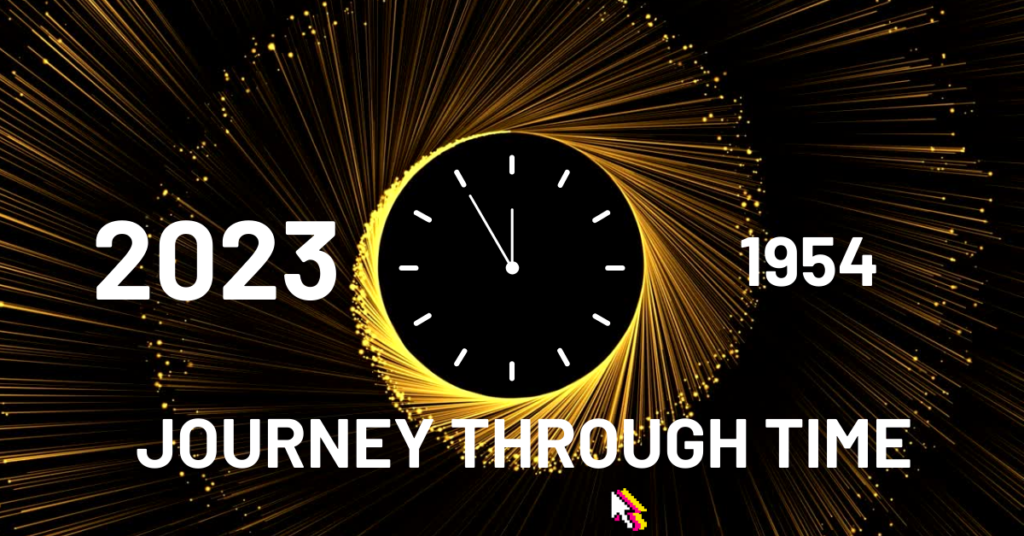In a rapidly evolving world, comparing different eras provides a lens through which we can appreciate the progress and changes that have shaped our societies. This article delves into a comparative analysis of 2023-1954, exploring the profound differences in technology, culture, and lifestyle.
Introduction
As we navigate the complexities of modern life, it’s intriguing to look back and contrast it with past decades. The year 1954 represents a time of post-war recovery and the dawn of the modern age, while 2023 showcases an era of unprecedented technological advancements and cultural shifts. This comparison not only highlights how far we’ve come but also offers insights into the challenges and opportunities that have defined each era.
Technology in 2023 vs. 1954
The technological landscape of 2023 is almost unrecognizable compared to that of 1954. In 1954, television was a novelty, and the transistor radio was cutting-edge technology. In 2023, a plethora of digital devices, from smartphones to smart homes, surrounds us.
Communication Evolution
In 1954, communication was predominantly through landline telephones and postal services. Long-distance calls were expensive and reserved for special occasions. Today, communication has transcended these limitations. The internet and mobile technology have revolutionized how we connect, making instant communication across the globe a norm.
Transportation Advancements
Transportation in 1954 was characterized by the prevalence of automobiles and the nascent stages of commercial aviation. The 1950s saw the birth of the interstate highway system in the United States, which facilitated road travel. In contrast, 2023 boasts electric vehicles, high-speed trains, and a burgeoning space tourism industry. The advent of autonomous vehicles is set to transform our transportation systems even further.
Healthcare and Medicine
In 1954, healthcare was relatively rudimentary compared to today’s standards. Penicillin marked a major breakthrough, but medical technology and treatments were limited. In 2023, we have advanced diagnostic tools, telemedicine, and personalized treatments. The rapid development of vaccines, as seen with the COVID-19 pandemic, underscores the strides made in medical research and public health.
Cultural Changes
The cultural landscape has also undergone significant transformations between 1954 and 2023. In the 1950s, people returned to traditional values and embraced a rising consumer culture in the post-war era. People characterize the 2020s by creating a more diverse and inclusive society.
Entertainment and Media
In 1954, entertainment revolved around radio broadcasts, black-and-white television shows, and cinema. The golden age of Hollywood was in full swing. Today, entertainment is dominated by streaming services, social media, and interactive content. The shift from passive consumption to active engagement with media has redefined our cultural experiences.
Social Movements and Equality
The 1950s were a time of burgeoning civil rights movements, with activists fighting against segregation and for equality. In contrast, 2023 sees continued advocacy for various social justice issues, including gender rights, and environmental sustainability. The global nature of these movements highlights the interconnectedness of our modern world.
Economic Shifts
Economically, 1954 was a period of post-war boom and industrial growth. Men largely dominated the workforce, and people commonly adhered to the concept of a single-income household. By 2023, the economy has become more digital and service-oriented. The rise of remote work, gig economy, and technological entrepreneurship has redefined traditional employment models.
Education and Knowledge Access
Education in 1954 was localized and limited by geographical boundaries. The advent of the internet and digital learning platforms in 2023 has democratized access to knowledge. Online education, virtual classrooms, and educational apps have made learning more accessible and flexible.
Environmental Awareness
In 1954, environmental awareness was minimal, and industrialization often came at the expense of the environment. Today, environmental sustainability is a global priority. Renewable energy sources, climate change initiatives, and conservation efforts reflect a growing commitment to protecting our planet.
Fashion and Lifestyle
Fashion in 1954 was characterized by modesty and formality. The influence of Hollywood and fashion icons like Audrey Hepburn set the trends. In 2023, fashion is more diverse and expressive, with sustainability becoming a key consideration. The rise of fast fashion and its subsequent criticism has led to a shift towards more ethical and eco-friendly choices.
Daily Life and Routine
In 1954, people structured their daily routine around traditional work hours and family roles. Leisure activities included community events, outdoor activities, and radio shows. In 2023, the concept of work-life balance has evolved. Flexible work hours, digital entertainment, and a focus on mental health and wellness are central to modern life.
Challenges and Opportunities
Each era presents its unique challenges and opportunities. In 1954, the challenges included recovering from the effects of World War II and navigating the early stages of the Cold War. Industrial growth and technological innovation centered around opportunities. By 2023, challenges have shifted to addressing climate change, ensuring data privacy, and managing the impacts of rapid technological advancements. Opportunities lie in harnessing technology for social good, fostering global collaboration, and promoting sustainable development.
Reflections on Progress
Reflecting on the progress from 1954 to 2023 reveals a remarkable journey of human innovation and resilience. The advancements in technology, culture, and lifestyle underscore the dynamic nature of human societies. Understanding this evolution helps us appreciate the present and envision a future where continued progress is possible.
Conclusion 2023-1954
The comparison between 2023 and 1954 highlights the dramatic changes that have shaped our world over the past seven decades. From technological breakthroughs to cultural shifts, each era offers valuable lessons and insights. As we move forward, it is essential to acknowledge and learn from the past while embracing the possibilities of the future.
FAQs
How has technology changed from 2023-1954?
Technology has evolved from basic electronics like transistor radios and landline phones in 1954 to advanced digital devices, the internet, and AI-driven technologies in 2023.
What were the main modes of transportation in 1954 compared to 2023?
In 1954, automobiles and early commercial aviation dominated transportation. By 2023, we have electric vehicles, high-speed trains, and emerging autonomous and space travel technologies.
How did healthcare in 1954 differ from healthcare in 2023?
Healthcare in 1954 was basic with limited treatments and technology. In 2023, we have advanced diagnostics, personalized medicine, and telehealth services that significantly improve healthcare outcomes.
What were the cultural differences between 2023-1954?
Traditional values and consumer culture marked the 1950s, while diversity, inclusivity, and a shift towards digital media and entertainment characterize 2023.
How has the economy transformed from 1954 to 2023?
The economy has transitioned from industrial and manufacturing dominance in 1954 to a digital, service-oriented economy in 2023, with new employment models like remote work and the gig economy.
What environmental changes have occurred between 2023-1954?
Environmental awareness was minimal in 1954, with industrialization causing significant harm. By 2023, there is a strong focus on sustainability, renewable energy, and climate change initiatives.





